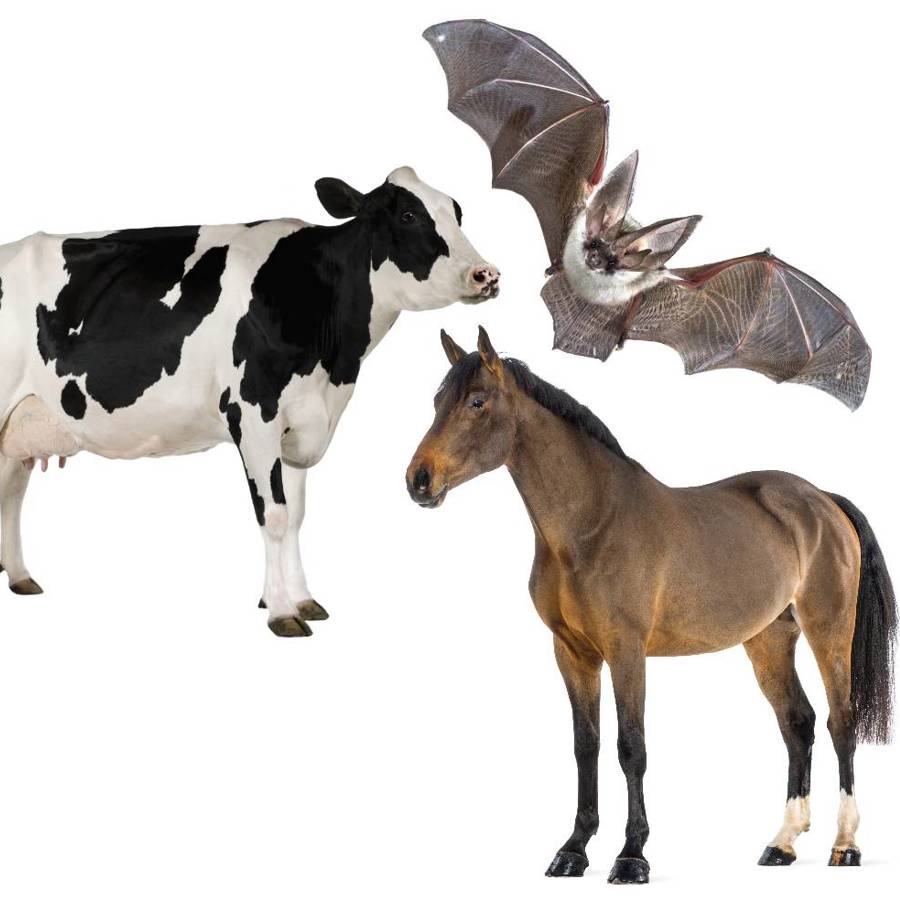
Why do horses share more DNA with bats than with cows?
May 15, 2025

- Related Topics:
- Animal biology,
- Evolution,
- Comparing species
A curious adult asks:
"Why is it that horses and bats have such similar DNA despite studies saying they aren’t closely related?"
It is easy to assume that animals are related if they look similar to each other. After all, children look a lot like their parents! However, physical resemblance does not always reflect genetic closeness (how much DNA is shared).
Physically, horses and bats seem incredibly different: horses are large, hoofed and ground-dwelling, while bats can fly and echolocate. Based on appearance, you would probably guess that horses are more closely related to cows than bats, but horses actually share more DNA with bats.1 Without looking at their genetic information, you would never guess how closely related they are!
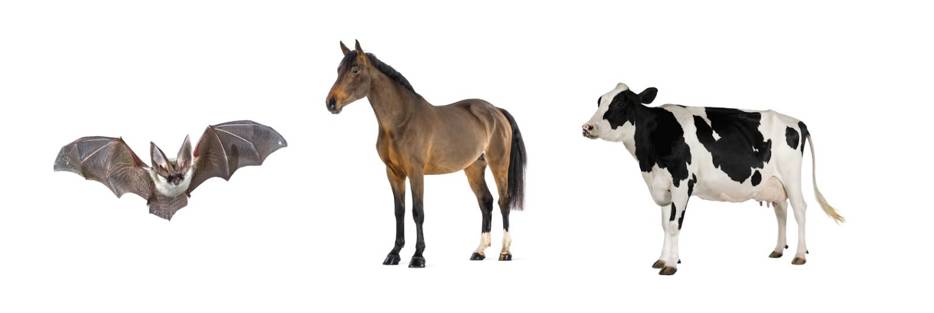
It turns out that there are lots of odd and interesting examples like this! Cows, which are also large, hoofed, and ground-dwelling, are genetically more closely related to whales than they are to horses.1 Turtles share more DNA with birds than they do lizards.2 Elephants' closest relatives are manatees and tiny furry creatures called hyraxes.1
So how can all of these counterintuitive relationships be true? The short answer is that evolution works in surprising ways and genetics (the study of DNA) has the power to reveal hidden relationships that physical traits cannot! To dig in a little more, let’s start by mapping out these relationships.
Phylogenetic trees
Phylogenetic trees are how biologists illustrate the evolutionary history of different species. Here is the format of a phylogenetic (or evolutionary) tree:

These trees can be constructed from different types of information. Historically, we used traits that were easy to see, like physical appearance, but nowadays, we use genetic similarity to build these trees. What do you think the phylogenetic tree looks like for horses, bats and cows?

The highlighted regions in orange and red represent clades, which are groups of organisms believed to have evolved from a common ancestor. Horses and bats are of the Pegasoferae clade because they share a common ancestor.
Cows are not part of the Pegasoferae clade, but they do still have a common, although older, ancestor in common. Therefore, all three animals, cow, horse, and bat, are part of a larger clade known as Scrotifera.
When we include the other mammals I mentioned on this tree, you can really appreciate how surprising their evolutionary relationships are!
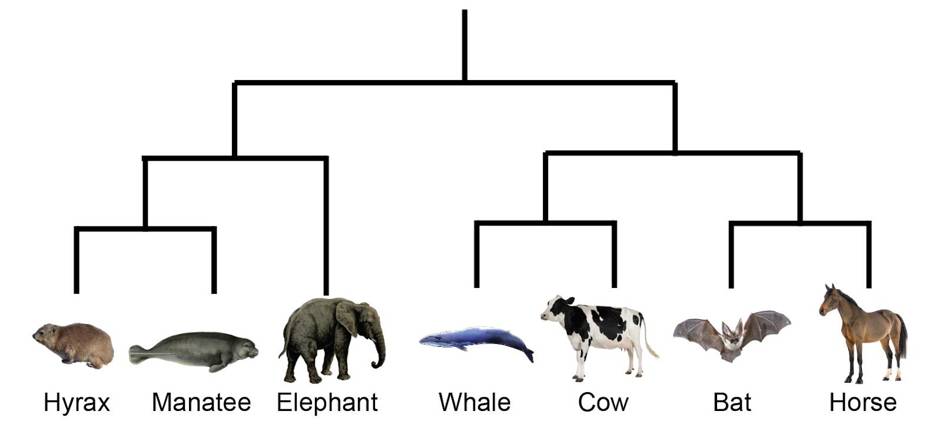
Convergent vs. divergent evolution
When we are first taught about DNA, we learn that it passes on specific traits from parents to their offspring. So why is it that traits, like the ability to echolocate or having hooves, do not necessarily tell us about the evolutionary relatedness of animals?
Convergent evolution
A phenomena called convergent evolution could be at work. This is the process in which unrelated species evolve similar traits, often because of shared environmental pressures.
An example of this is that both bats and dolphins independently evolved the ability to echolocate. Both animals needed to sense and navigate their surroundings without sight; bats were challenged with the darkness at night, while dolphins were challenged with murky water. Due to these similar pressures, one of the genes known to be important in echolocation, called Prestin, became mutated during the evolution of both bats and dolphins and enabled the superpower to “see” using sound!3
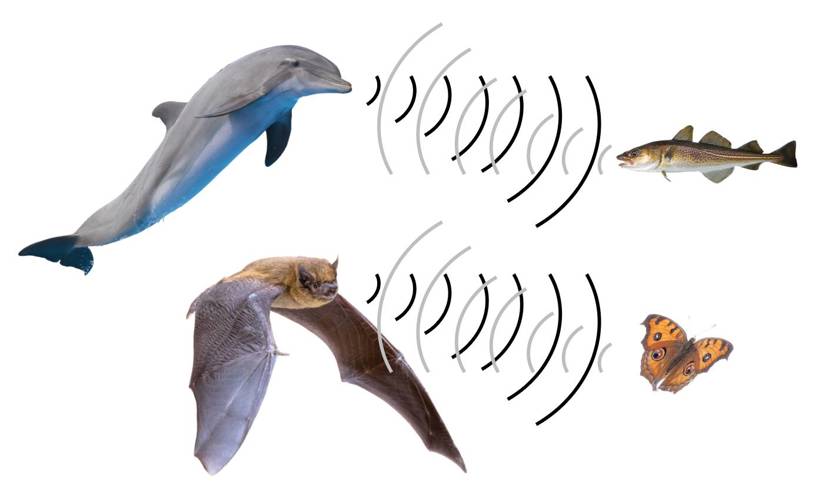
Another interesting example of convergent evolution is something called mimicry. So what is it? Well, mimicry is pretty much what it sounds like! One creature evolves the ability to imitate something else to gain a survival advantage.
This phenomenon can be clearly seen between the hoverfly and bees. Bees can sting attackers, while hoverflies cannot. By evolving traits that allowed them to look more like bees, hoverflies fooled predators into thinking that they were dangerous! This form of imitation where a harmless species mimics a toxic one is called Batesian mimicry, but there are many other forms of mimicry as well!
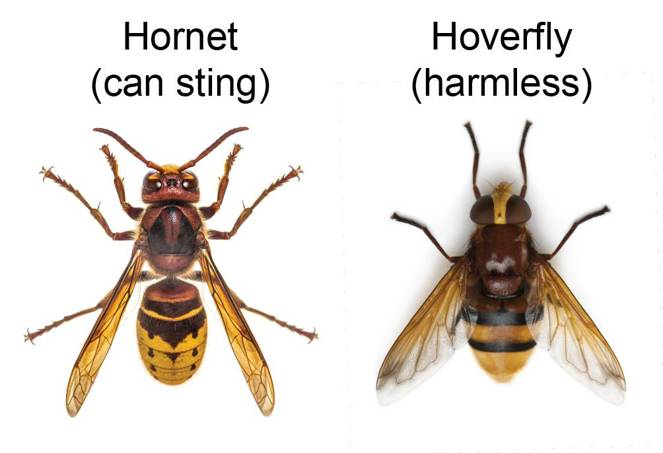
It is important to remember that just because two animals are in the same environment or feel the same selective pressure does not mean they will happen upon the same genetic solution. But when they do, we call it convergent evolution! This can help us explain why more distantly related animals share very similar traits.
Divergent evolution
On the other hand, divergent evolution can help us explain why closely related species may look very different from each other. Divergent evolution often happens when two populations of the same species end up in different environments with unique selective pressures.
One of the most famous examples of divergent evolution is Darwin’s finches. When Charles Darwin was traveling through islands within the Galapagos, he noticed that the finches on each island had distinct beaks.
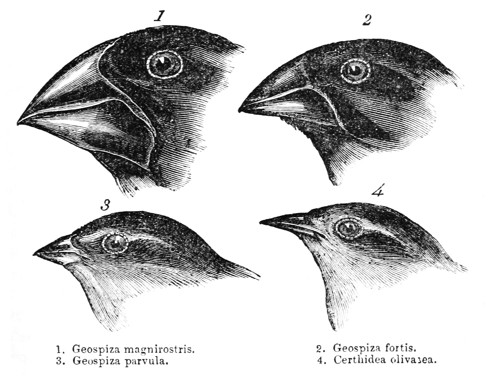
Darwin hypothesized that the different food sources on each island pressured the finches to evolve unique beaks to specifically help them eat bugs, plants or nuts. This observation led to his theory of natural selection! This common ancestry between the finches was eventually validated with modern-day genomics.4
Similar to these finches, divergent evolution can also explain how, despite their common ancestor, bats and horses are so different from each other.
Parallel evolution
Unlike convergent and divergent evolution, parallel evolution is the most intuitive to understand! Parallel evolution is the process by which similar species, under similar environmental pressure, independently evolve similar traits. A common example of this is that multiple families of tree frogs have independently evolved the ability to glide through the air!
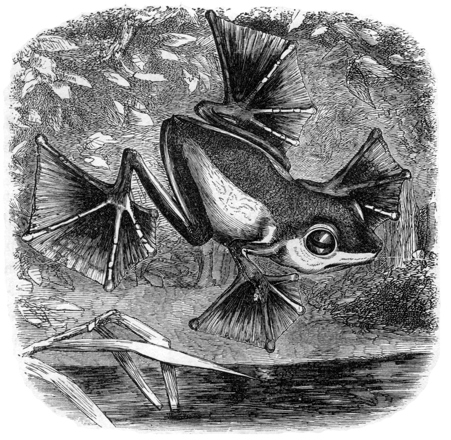
Keeping these three different forms of evolution straight can be tricky, but hopefully this graphic helps!

So how did scientists find these hidden genetic relationships?
The main takeaway is that scientists collect DNA from different organisms, read those DNA sequences, and then computationally search for similarities and differences. If you would like to understand more, you can check out this Ask A Geneticist article! There are many types of DNA changes that mark evolutionary divergence, but the researchers that studied horses and bats used a particular one called transposable elements.
Transposable elements
Often called ‘jumping genes’, transposable elements are stretches of DNA that have the ability to move within the genome!
It is really unlikely that one of these elements jumps to the exact same spot in two unrelated species. So, when we see transposable elements at the same location within DNA in two animals, we can be pretty confident that they inherited this element from a common ancestor!
For example, a specific genomic region might look like this across bats, horses, and cows:

The researchers found many examples of these elements across the mammals they studied, enabling them to construct the phylogenetic tree.
Hopefully, you have learned why we cannot always trust our eyes when trying to decide which animals are more related to each other! I’ll leave you to ponder whether dogs are more closely related to cats or to seals…

Author: Julia Schaepe
When this answer was published in 2025, Julia was a Ph.D. candidate in the Department of Bioengineering, studying mammalian transcriptional regulation in Dr. William Greenleaf’s laboratory. Julia wrote this answer while participating in the Stanford at The Tech program.
 Skip Navigation
Skip Navigation
